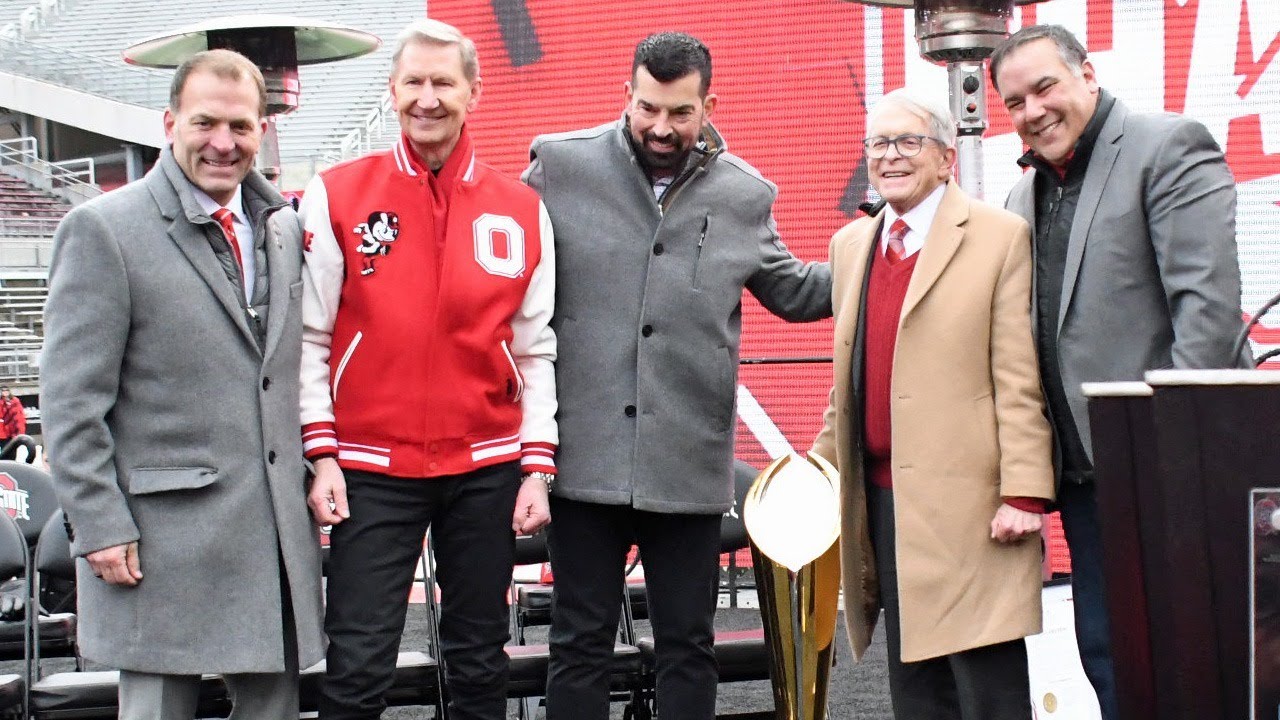“It’s Happening Again”: Ohio State’s Reluctance on NIL Spending Could Cost the Buckeyes Another Star as Frustration Boils Over Inside the Program
There was a time when Ohio State didn’t need to chase anyone. When recruits didn’t hesitate, when five-star talent came to Columbus with eyes on championships, NFL futures, and a shot at becoming legends in one of the sport’s most hallowed programs. The Buckeyes were elite, expected to contend every year, and rarely, if ever, outbid or outmaneuvered on the recruiting trail. But in the new era of college football—where name, image, and likeness (NIL) deals have reshaped the foundation of the sport—Ohio State is now facing a frustrating, dangerous reality: it’s not enough to be a powerhouse anymore. You have to pay like one. And the Buckeyes, despite their status and tradition, are once again flirting with disaster because of a cautious NIL stance that is beginning to wear thin not just among recruits, but inside the walls of the program itself.
Whispers of discontent aren’t new in Columbus. Coaches, boosters, and players have all quietly acknowledged over the past two years that Ohio State’s NIL efforts—while organized and ambitious on paper—have often failed to match the aggression seen at programs like Texas, USC, Oregon, and yes, even rivals like Michigan. The Buckeyes have operated with the belief that their brand, their facilities, and their NFL pipeline would remain their strongest pitch. And for some, that’s still true. But increasingly, top-tier recruits are being swayed by the combination of exposure and compensation elsewhere. The result? Ohio State has watched more than a few high-profile targets slip away—and worse, they’ve struggled to hold onto the ones already on campus.
Sources inside the program describe a growing tension between staffers who understand the urgency of the NIL arms race and decision-makers who continue to prioritize long-term sustainability over short-term spending. That internal debate, while rooted in good intentions, is beginning to create rifts. Coaches want players. Players want money. Boosters want results. And in between all of it, Ohio State is watching the landscape change faster than they seem willing to respond. The consequence isn’t just losing a five-star recruit to the SEC. It’s watching a locker room lose faith in the system. It’s seeing players hit the portal not because they dislike the culture—but because someone else offered six figures to wear a different uniform.
The frustration reached a new boiling point this summer, when reports surfaced that multiple elite recruits cited NIL as the primary reason they were backing away from Ohio State. In some cases, the Buckeyes had led for months—only to be leapfrogged at the eleventh hour by schools willing to be more aggressive financially. One recruit, speaking anonymously, put it bluntly: “Ohio State felt like the right place. But when it came time to talk money, other schools were just real about it. They didn’t sugarcoat it or delay it.” It’s a sentiment echoed by high school coaches and recruiting insiders across the country. Ohio State, they say, still expects its name to carry weight in rooms where dollar figures now speak louder than tradition.
The Buckeyes are not broke. Far from it. Their collectives are among the most well-organized in the country. The donor base is massive. The alumni network is powerful. But for reasons that continue to baffle some insiders, there remains a hesitancy to push all the chips in when it comes to NIL battles. That conservative posture, while admirable to some, is increasingly viewed as outdated by others. As one former player-turned-analyst put it: “Ohio State is playing chess while everyone else is in an arms race. That sounds cool in theory—until you lose a war.”
Even current players have begun to voice subtle frustration. While many enjoy strong NIL deals, they know peers at other schools are cashing in at higher levels. And when they see the next wave of stars considering other programs because of financial incentives, the message becomes clear: loyalty alone isn’t enough anymore. If Ohio State wants to win recruiting battles at the highest level, they can’t keep assuming the Block O will do all the work.
Ryan Day is in a difficult spot. As head coach, he’s responsible for winning games, developing players, and navigating the ever-changing college football landscape. But increasingly, NIL management has become one of the most critical aspects of roster building. Day, by all accounts, has pushed for more aggressive NIL efforts. He’s spoken publicly about the need to compete financially, and privately, he’s urged decision-makers to evolve. But the challenge is layered. There’s a desire to protect the culture. To avoid bidding wars. To keep promises realistic. But in doing so, the Buckeyes risk appearing hesitant, even timid, in a sport that no longer rewards patience.
The consequences are becoming hard to ignore. In the 2024 cycle alone, Ohio State missed out on several top defensive players who were once considered locks. The wide receiver pipeline, long the envy of the country, remains elite—but depth issues at other positions suggest a growing imbalance. And the transfer portal, once a safety net, is now a double-edged sword. Yes, it offers second chances. But it also makes departures easier. Already, insiders are watching key players closely, wondering whether new offers from other schools will test their commitment in the coming months.
Perhaps the most troubling aspect of the current NIL posture is what it says to future stars. If recruits and their families don’t believe Ohio State will fight for them financially, why would they choose Columbus over places where the money and the message are both clear? If rising sophomores on the roster feel undervalued, why wouldn’t they listen when an SEC school offers a starting spot and a $300,000 NIL deal? And if the Buckeyes lose momentum now, what does that mean for the next two to three recruiting cycles?
There’s still time to correct course. Ohio State is still one of the most attractive brands in college football. Their fan base is massive. Their media exposure is elite. And their success under Day, despite the growing noise, remains consistent. But the window is shrinking. If the program continues to watch elite talent slip away, if they keep missing out on critical portal additions, if they continue to let the NIL message drift while others shout it loudly, the price will be paid not just in recruiting rankings—but in wins, in championships, in Playoff appearances.
The Buckeyes don’t need to become reckless spenders. They don’t need to outbid every program in the country. But they do need to show their players—and their targets—that they understand the stakes. That they value commitment with action. That they’re not stuck in 2019 when the game has changed in 2025. If they don’t, they risk watching their grip on the elite tier slip—not because of coaching, not because of culture, but because they couldn’t—or wouldn’t—match what the new era demands.
It’s not just about buying players. It’s about showing them that Ohio State still leads, still innovates, still dominates—not just on the field, but in every way that matters to today’s athlete. Right now, the perception is shifting. And unless the Buckeyes adjust quickly, they may soon find themselves chasing programs they once outclassed, wondering how it all turned so fast.
The NIL era has created chaos across college football. But it’s also created opportunity. For Ohio State, the opportunity is clear: adapt, or risk being left behind. And if they don’t act soon, they won’t just lose recruits. They’ll lose their place among the sport’s true titans. The Buckeyes are on the verge—and this time, it’s not a question of talent. It’s a question of will.


